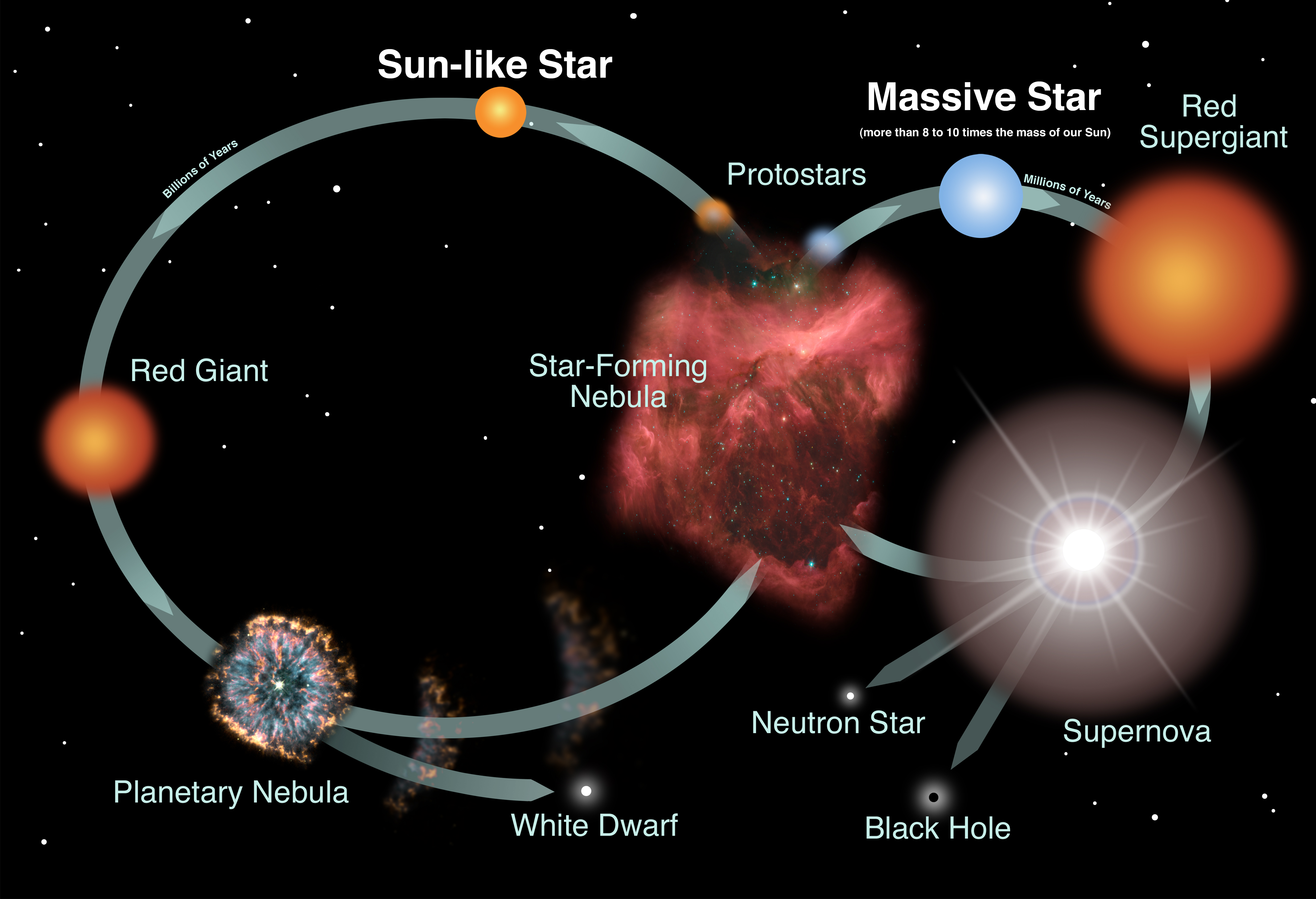James Webb Space Telescope Special Exhibit
The Formation of Stars and Protoplanetary Systems
Stars, like our Sun, can be thought of as "basic particles" of the universe, just as atoms are "basic particles" of matter. Groups of stars make up galaxies, while planets and ultimately life arise around stars. Although stars have been the main topic of astronomy for thousands of years, we have begun to understand them only in recent times through the advent of powerful telescopes and computers.

Diagram showing the lifecycles of Sun-like and massive stars. (Credit: NASA and the Night Sky Network)
Researchers still do not know the details of exactly how clouds of gas and dust collapse to form stars, or why most stars form in groups. Young stars within a star-forming region interact with each other in complex ways. The details of how they evolve and release the heavy elements they produce back into space for recycling into new generations of stars and planets is still an active area of research.
Astronomers know that a large number of stars that are like our Sun have gas-giant planets. They have discovered numerous planetary systems outside our solar system. Many of these planets are very large (like Jupiter), but unlike the large planets in our solar system, they are in very close orbits around their own sun. Some only take 3 days to orbit their sun, which is closer than Mercury is to our Sun.
The discovery of such planetary systems came as a surprise to astronomers. Their discovery made scientists rethink their ideas and theories about how planets are formed. Scientists realize that to get a better understanding of how planets form, they need to have more observations of planets around young stars, and more observations of leftover debris around stars, which can come together and form planets.
To unravel the birth and early evolution of stars and planets, we need to be able to peer into the hearts of dense and dusty cloud cores where star formation begins. These regions cannot be observed at visible light wavelengths as the dust would make such regions opaque and must be observed at infrared wavelengths.
Webb's superior imaging and spectroscopy capabilities will allow us to study stars as they are forming in their dusty cocoons. It will also be able to image disks around stars and study organic molecules that are important for life to develop.
Published: April 2007
Text Reviewed: September 2018


